It seems we can’t find what you’re looking for. Perhaps searching can help.
Sign Up for newsletter!
Subscribe to get the latest eBook!
Hotline







Fashion eCommerce is growing increasingly influential, particularly in markets with a young population, such as Vietnam, where demand for fashion and lifestyle is diversified.
Recognising this, several fashion brands have begun developing their own eCommerce websites to join this lucrative business swiftly.
Coolmate is a men’s fashion business started in 2019. With a D2C eCommerce strategy as the centre for business development, after only 2 years of implementation, Coolmate had a successful capital call on Sharktank with Nguyen Hoa Binh for 500,000 USD. By 2021, Coolmate’s sales may reach VND 139 billion, an increase of 3.5 times compared to 2020, setting the 2022 revenue expectation at 440 billion.
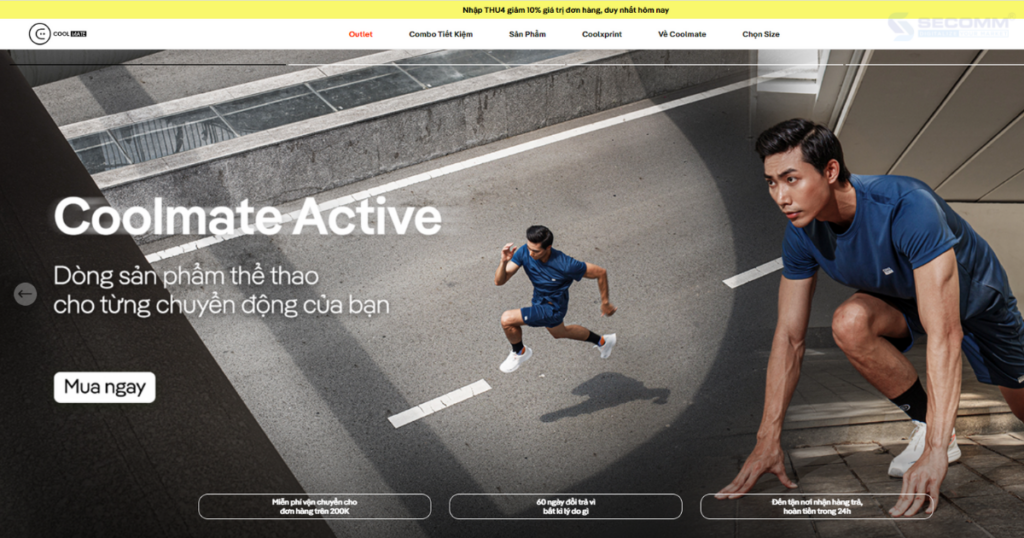
Hai Trieu, which was founded in 1991, has over 30 years of expertise in the watch industry. To adapt to the changing industry and consumers, Hai Trieu has incorporated an eCommerce strategy into its business model with the objective of becoming a dominant watch retailer in Vietnam. Hai Trieu’s eCommerce website has received over 1 million monthly visits and is ranked among the top sites in the fashion eCommerce industry in Vietnam. (according to iPrice).
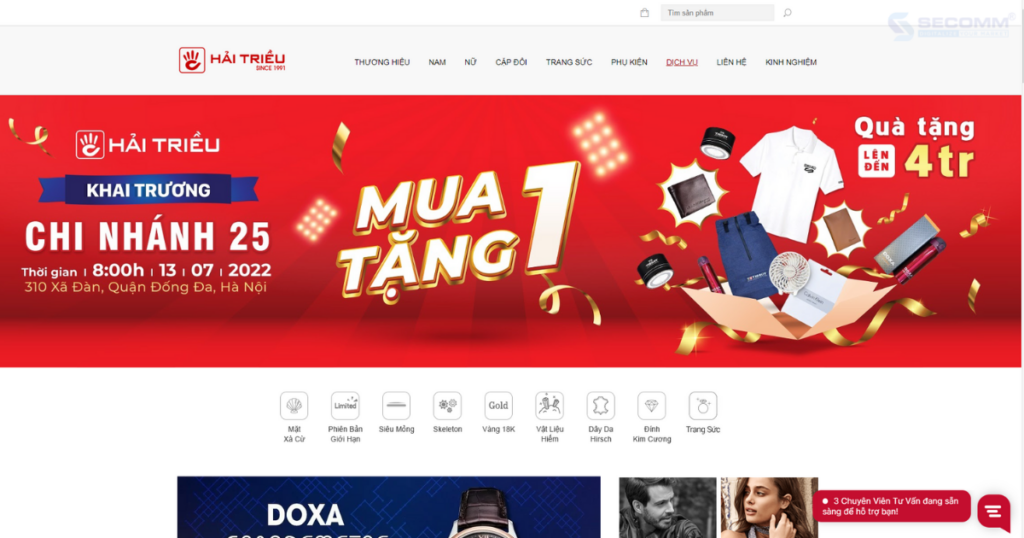
The official name of PNJ is Phu Nhuan Jewelry Joint Stock Company, which was founded in 1988. PNJ has spent a long time developing a fashion eCommerce website to apply the omnichannel sales strategy. Because of the early adoption of eCommerce, PNJ has surmounted the tumultuous year of 2021 with net sales of over VND 19,547 billion, an increase of 12% over 2020.
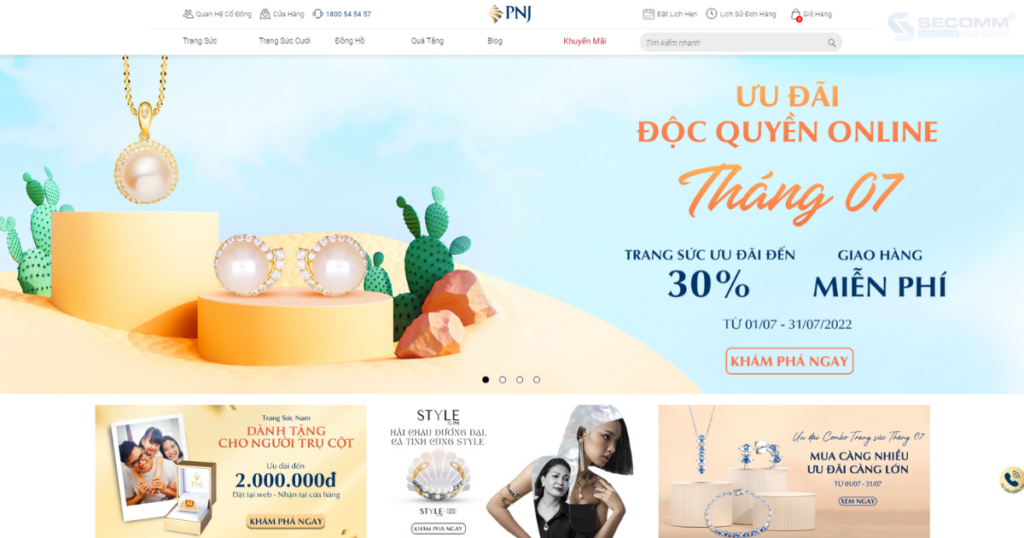
Founded in 2005, Juno is a brand known for its line of women’s fashion shoes and bags. Juno saw the enormous potential of the e-commerce sector and invested early in technologies to make the online company more efficient. As a result, the eCommerce website of Juno is currently the highest-visited website in the fashion line of shoes and bags in Vietnam.
Juno has usually cultivated the clothes and accessories area to suit its clients’ increasingly broad consumer demands.
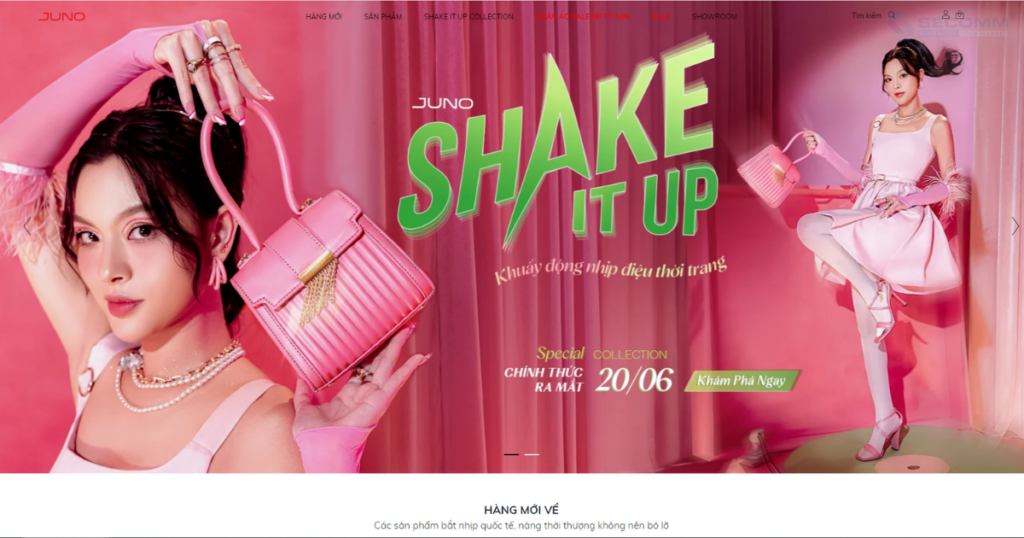
Canifa is a family fashion brand established in 1997, under Hoang Duong Service and Trading Joint Stock Company – a large fashion retailer in Vietnam. Canifa has built an eCommerce business with a reputation achieved in traditional fashion since 2012. Because of its long-term and sustainable eCommerce business strategy, this company opted to invest in establishing its own eCommerce website on the open-source platform – Magento and regularly upgrading this system to provide clients with the better eCommerce experience possible.
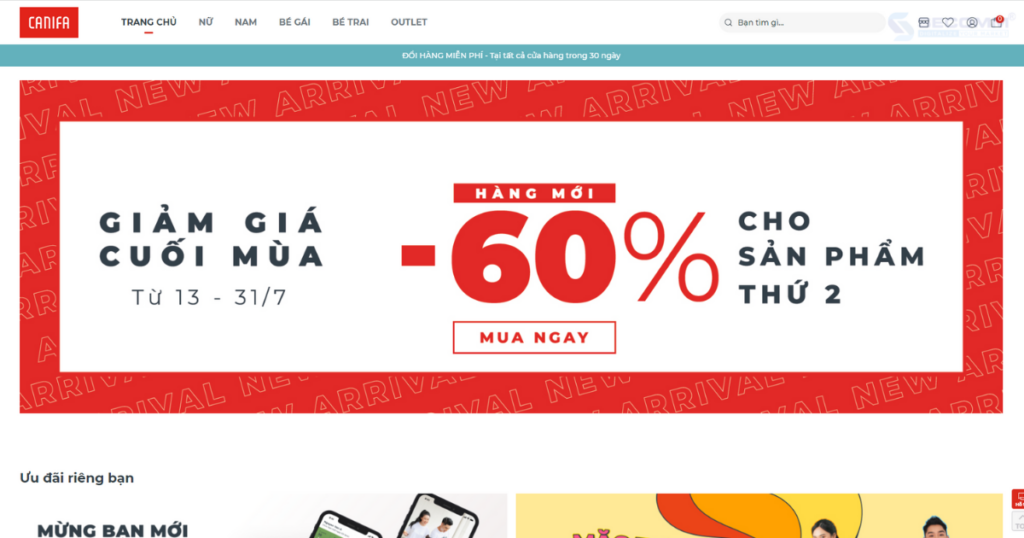
Hoang Phuc International (Hoang Phuc) was established in 1989 as a luxury fashion retailer of Kappa, Ecko Unltd, Superga, Replay, and Staple. This brand has decided to enter the eCommerce industry after three decades of using traditional strategy. Hoang Phuc has utilised and changed numerous platforms to create the successful eCommerce website that it is now. This business is currently employing the Magento platform – an open-source platform specialised in eCommerce.
This firm utilizes KOL and Livestream strategies to boost market penetration, besides constantly improving its own eCommerce website for selling apparel online.
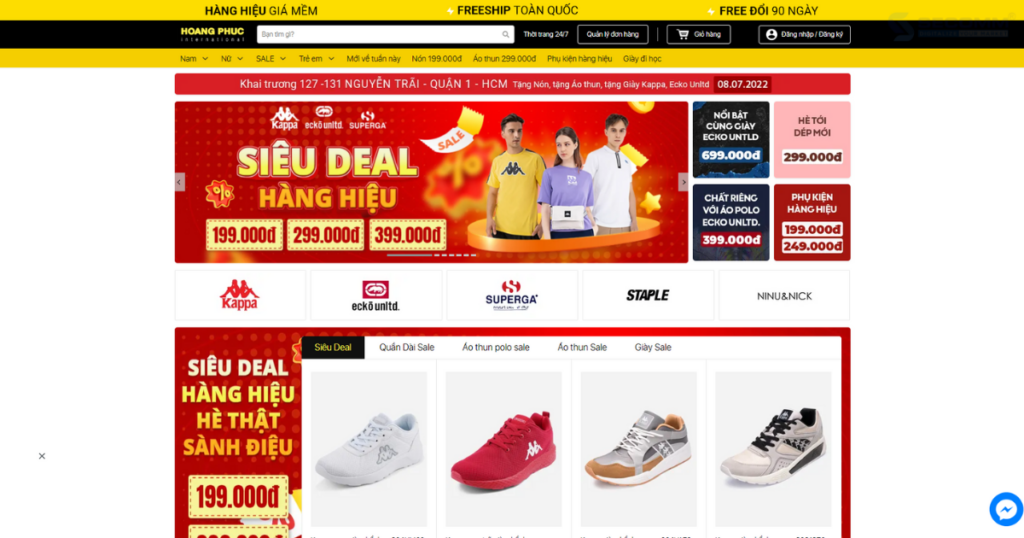
Bitis began as a small factory in 1982 and has grown to become the market’s top shoe and footwear brand. However, when user behaviour changes and new “players” enter the market, this business appears to fall behind. After a long period of lagging, Biti’s new CEO, Vuu Le Quyen – the eldest daughter of Mr. Vu Khai Thanh – chose to change strategy, focusing on investing in eCommerce business model to accelerate and catching up with the market.
Bitis’s has made a dramatic recovery due to this new strategy, vying directly with worldwide brands such as Nike, and Adidas in the Vietnamese market after a number of years of losing market share.
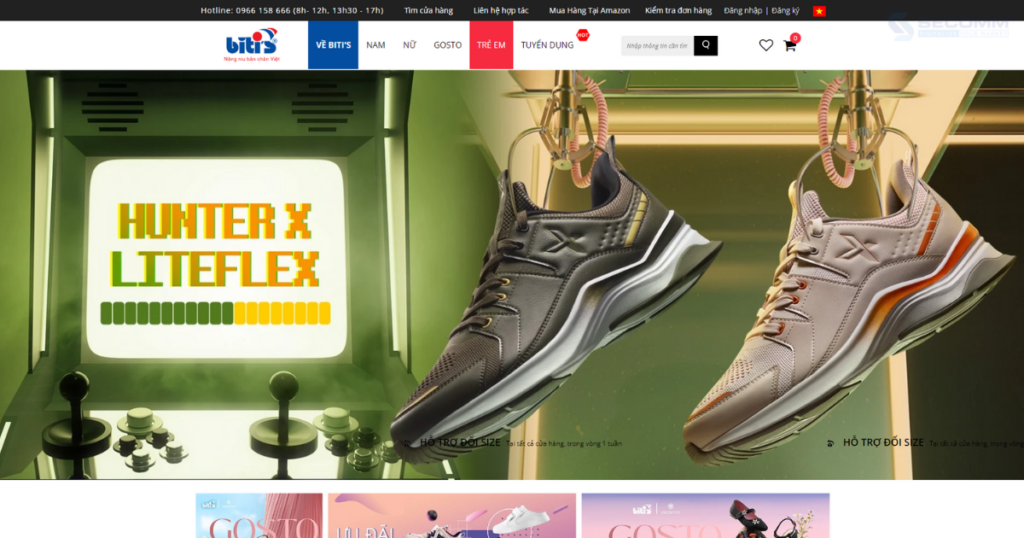
Orchard, which was founded in 2004, is a supplier of more than 200 luxury perfume brands from across the world. Orchard has implemented eCommerce promptly to tap the “gold mine” of this industry and become the No. 1 perfume retail brand in Vietnam. Orchard’s eCommerce website is now the favorite destination for customers who want to buy perfume online.
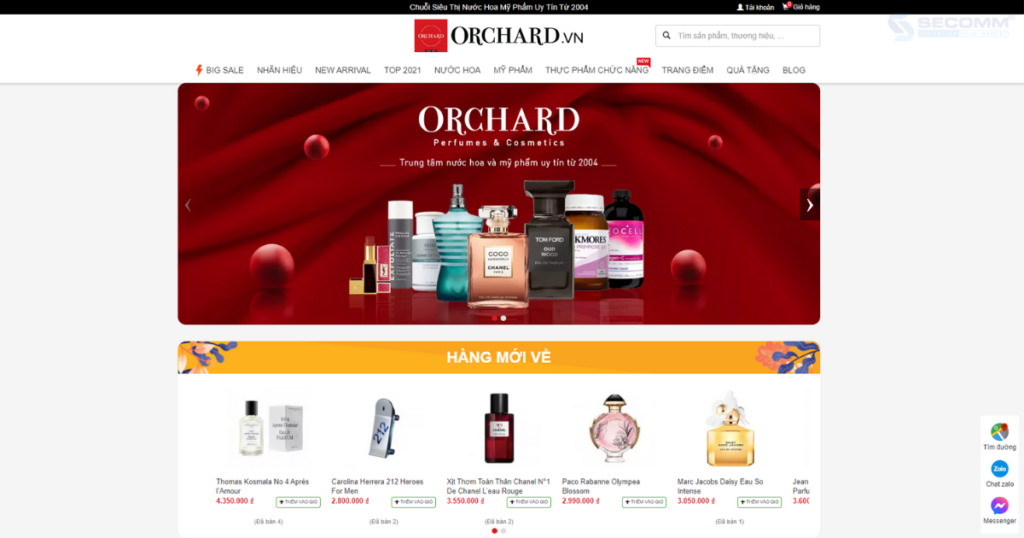
ONOFF was established in 2005 with the goal of providing daily comfort to everyone. ONOFF has advocated for adopting an eCommerce strategy by investing in building Magento websites like Canifa in 2016. As a result, the brand is gradually synchronizing on online and offline channels, with a customer loyalty rate of 80% maintained at all times, allowing ONOFF to more firmly believe in its goal of becoming the leading lingerie brand in Vietnam and a chance to conquering the ASEAN market in the next three years.
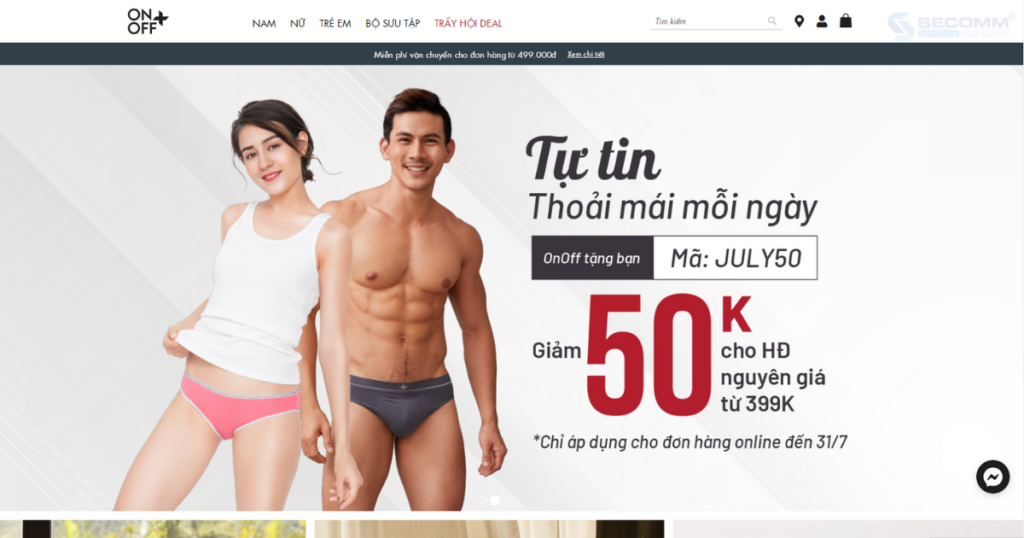
Rabity is a children’s fashion brand that was launched in 2000. Currently, Rabity is the sole Disney and Marvel partner with image rights for children’s fashion lines ranging from 0 to 14 years old. Rabity is pleased to have been the pioneer in deploying the first eCommerce for children’s fashion in Vietnam. Rabity is now present on all eCommerce channels and has its own eCommerce website.
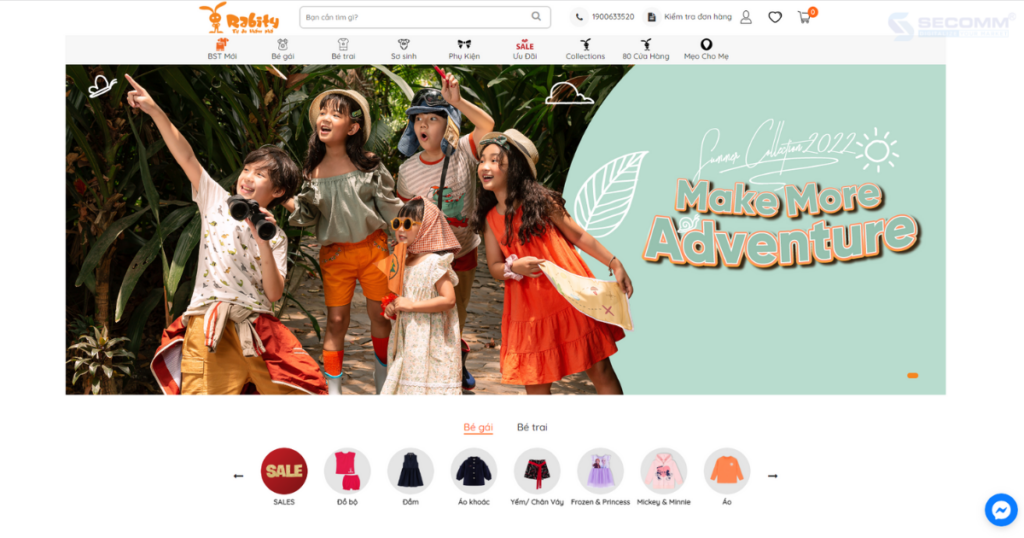
Overall, fashion businesses are achieving several successes after developing their own eCommerce websites. However, the fashion eCommerce industry needs careful consideration of tactics to take the most successful actions in the short term and in the long run. Of course, to do that challenging task, fashion companies must find a well-known or build skilled IT team.
 2
2
 7,988
7,988
 0
0
 1
1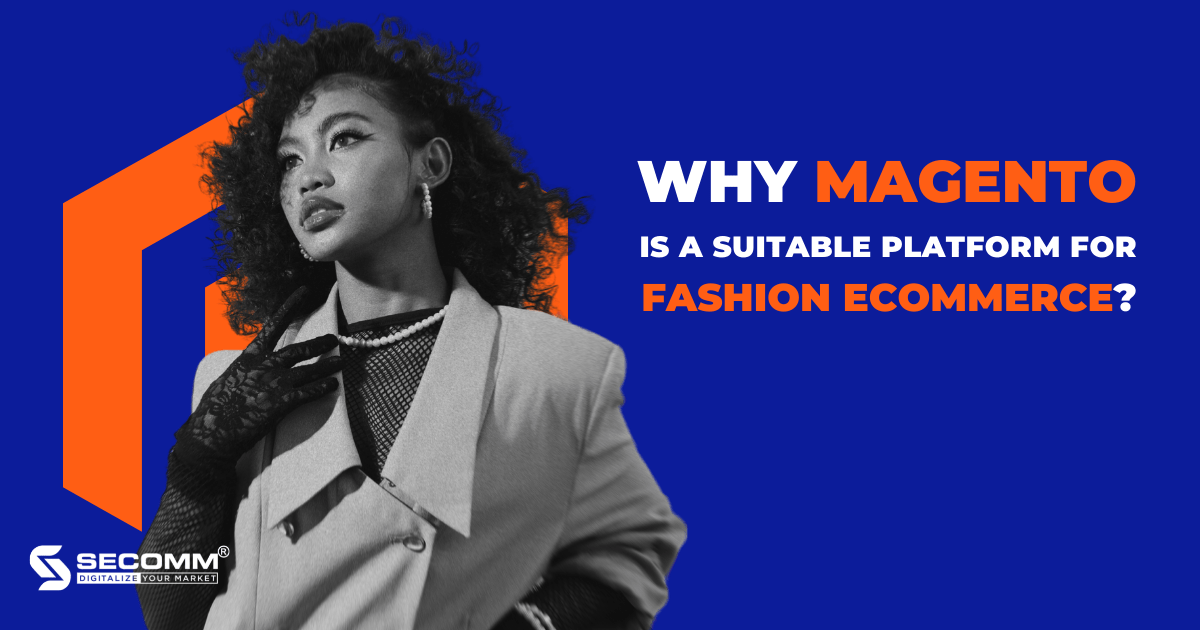
Fashion eCommerce has shown excellent development potential in recent years, with a worldwide market worth USD 759.5 billion in 2021 and predicted to reach USD 1 trillion by 2025. Clothing (+12.7%), Footwear (+11.6%), and Bags and accessories (+8.5%) are expected to increase the fastest in 2023.
Furthermore, fashion is one of the “four pillars” of Vietnam’s e-commerce economy, accounting for 43% of all online purchases, trailing only the eGrocery industry. According to the e-Conomy SEA Report 2021, 47% of Vietnamese respondents think that fashion eCommerce has become a consumer purchasing habit.
Despite the numerous prospects, this industry has multiple problems, including numerous rivals, continually changing consumer preferences, pushing firms to diversify models, Omnichannel sales to create more customer touchpoints, and so on.
As a result, to properly deploy fashion eCommerce, company managers must examine various elements, including the fundamental factor of developing a website. Among eCommerce platforms such as Shopify, BigCommerce, and WooCommerce, Magento is renowned as a platform used by many famous brands to establish eCommerce, including Canifa, Hoang Phuc International, OnOff, and others. So, why have these companies selected Magento?
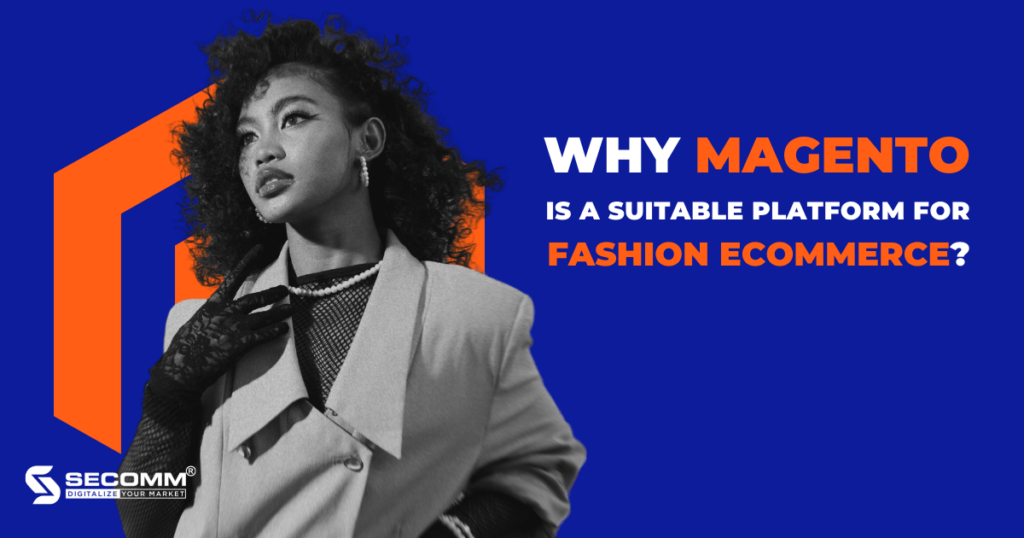
The demanding consumer base with excellent aesthetic sensibility is a common element of the fashion sector. This necessitates that fashion firms concentrate on the design of the eCommerce website interface, particularly the homepage, which must be professional and eye-catching.
The disadvantage of online fashion purchasing is that you cannot “See it with your own eyes, touch it with your own hands.” Therefore, the more detailed and colourful the image/video, the more authentic and trustworthy it will appear to buyers.
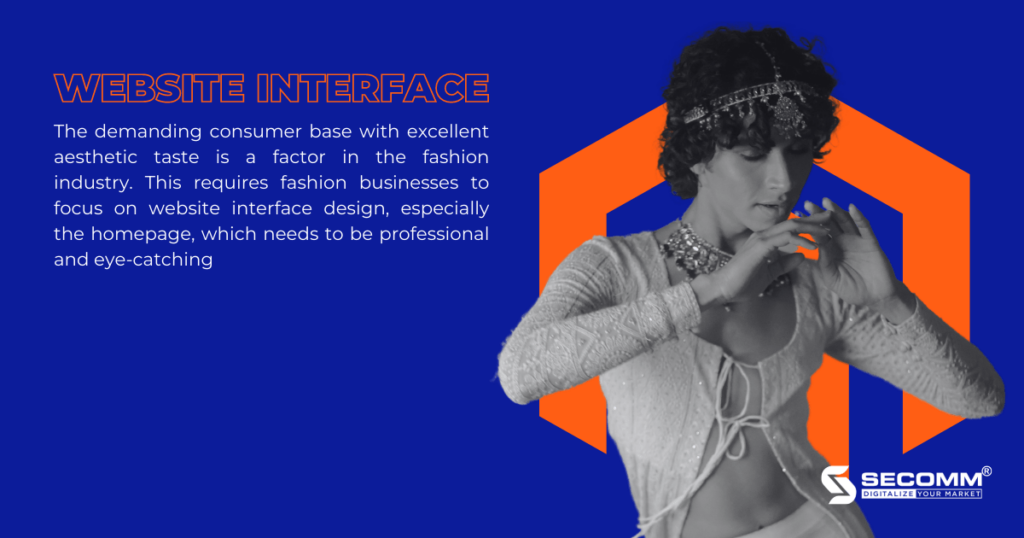
In terms of the UI (User Interface), visualisation affects the capacity of customers to engage with the website, helping to answer the question: “Has the user being able to navigate clearly from one page to another in a convenient way? “
Another website interface design is user experience (UX), from consistency in call to action button (CTA) or illustration locations, everything should be more convenient to create the most consistent experience for all website users.
Many functionalities are required for an online fashion business website to satisfy industry requirements.
The fashion sector is distinguished by multichannel sales and numerous client touchpoints. For instance, on e-commerce platforms (Shopee, Lazada, Tiki, Sendo), social networking channels (Facebook, Tiktok, Zalo, Instagram), and e-commerce websites and applications. When implementing eCommerce for fashion companies, administrators must employ an Omnichannel approach.
Usually, the fashion industry will have a lot of product categories and collections, from clothes, and shoes, to bags and accessories, so consumers’ need to search for products on the website and e-commerce app is very high. From there, businesses should build multi-layer menus and advanced product search functions by keywords or filters to serve the needs of searching and navigating customers.
Furthermore, because fashion is a highly competitive market, the more influential the communication strategies, the more orders the brand will obtain. Loyalty Programs, Livestream, Shoppertainment, Affiliate Marketing, and other fashion-related communication strategies on websites and mobile apps.
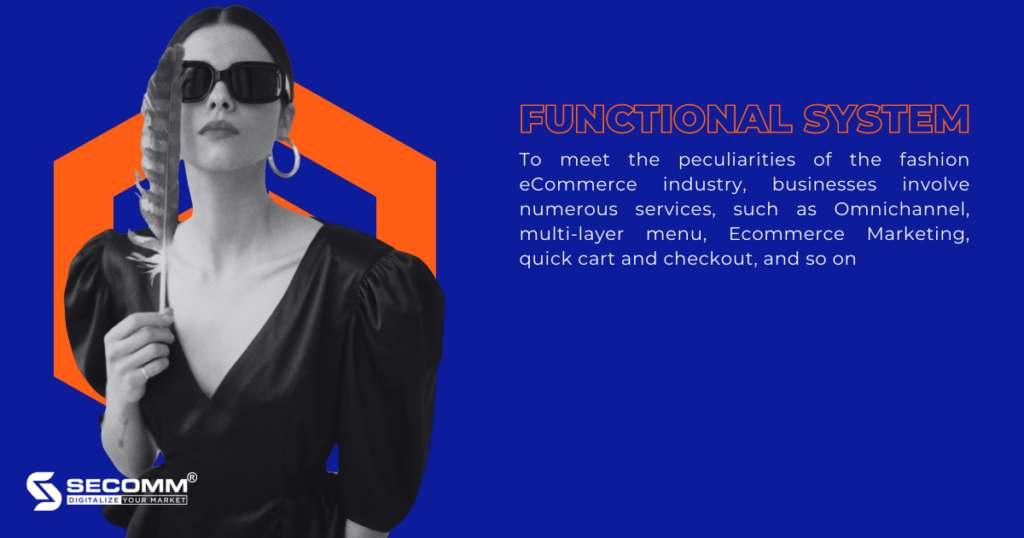
Clothing, bags, shoes, and fashion accessories are frequently low-involvement goods, thus creating a rapid shopping cart function would assist consumers to speed up the purchase process, increasing online sales for businesses.
Businesses should construct a feature to help categorise consumers to take care of and tailor the experience for each type of client in the fashion sector, which frequently has several customer groups, such as new, old, and VIP. From there, organisations will gradually use the understanding of each sort of consumer to develop better business solutions in the future.
After all, fashion eCommerce systems must frequently manage high traffic levels during peak seasons.
Businesses require a highly integrated website construction platform to properly execute fashion eCommerce, including Omni-channel, management system, payment, shipping, analytics, and reporting.
Because the fashion industry is distinct, it needs considerable coverage across all sales channels to reach many potential customers. Therefore, while implementing eCommerce, businesses have to use an Omnichannel strategy. However, to synchronise all data from front-end to back-end when deploying Omnichannel, companies require a highly linked system across all sales channels.
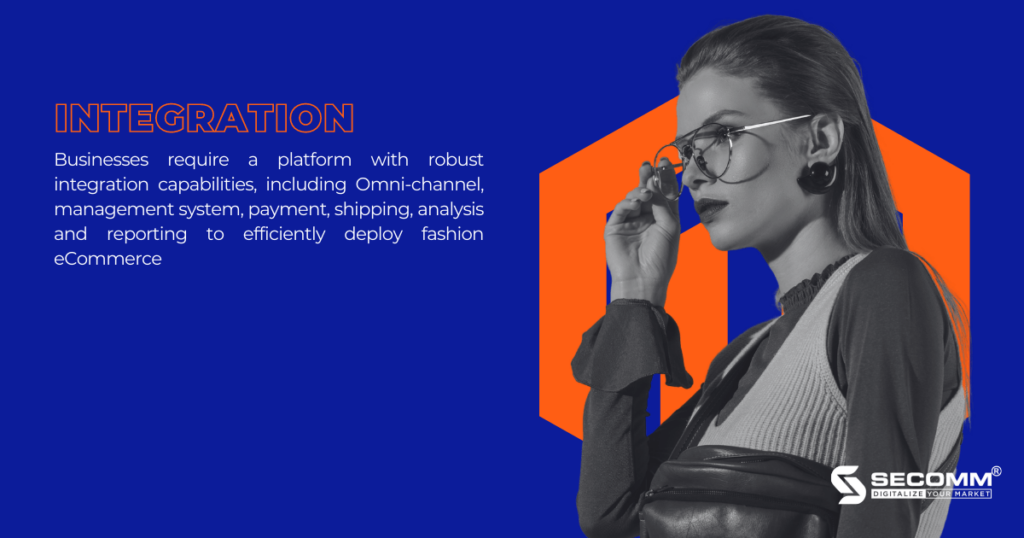
Simultaneously, fashion firms frequently utilise several third-party management systems such as POS, CRM, ERP, and BI, so businesses must find an eCommerce platform that can combine and manage all data information on” a single screen”
Furthermore, companies must vary payment and delivery methods so that clients have more options when buying fashion goods.
Finally, organisations must integrate analytics and reporting tools to provide real-time measurements with the most user-friendly reporting table. From there, firms could provide more practical guidance in the future.
Fashion businesses will have many different sizes, from startups, SMEs (small and medium enterprises), and new entrants to large corporations. Moreover, each business will have a different operating model, such as B2C, B2B2C, and so on.
All sizes and operating models will have unique requirements for each stage of brand development, so businesses need a platform to accompany them throughout the journey, preventing the circumstance of switching platforms consumes time and money when firms install eCommerce.
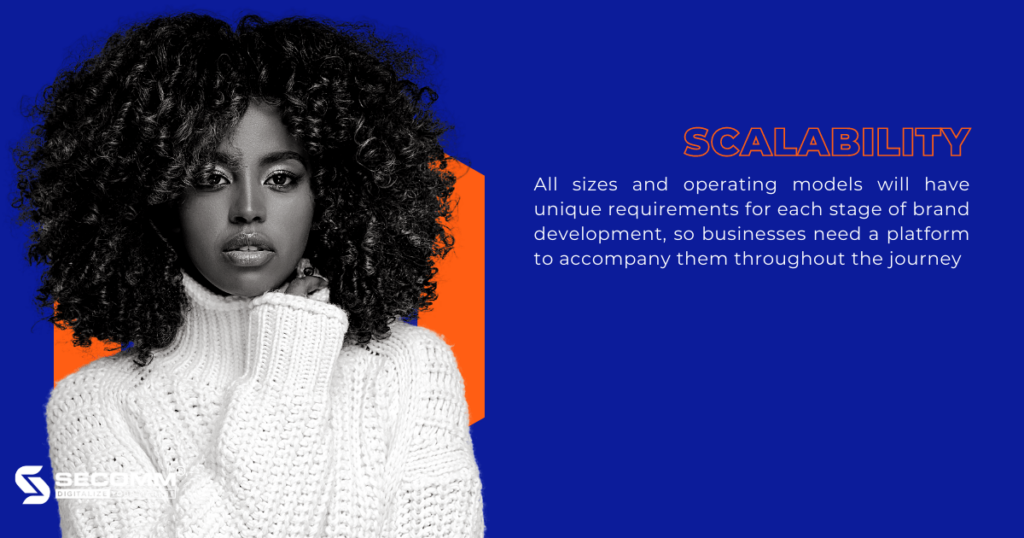
In summary, companies require a comprehensive platform to efficiently implement fashion eCommerce for the long run, including website interface, functional system, integration, and scalability.
When designing a fashionable eCommerce website interface on the Magento platform, businesses have many choices, including using existing themes, customising themes, and designing their own interface.
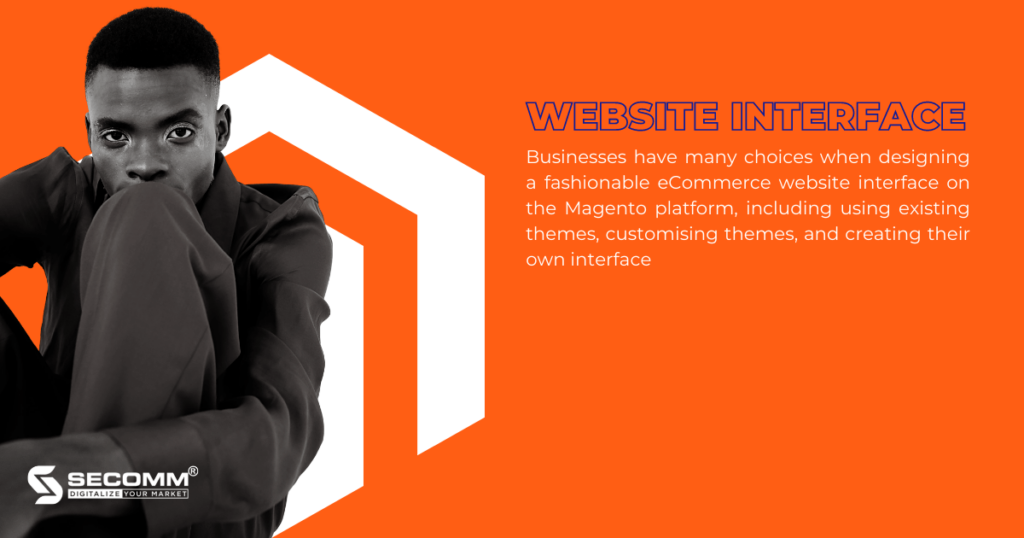
For using existing themes, companies may find these in the marketplace, developer community, or partner for Magento-specific themes in the fashion industry. This helps businesses reduce the expense of interface design, but it limits firms’ brand positioning because the interface is easily imitated by other websites.
For customising themes, businesses can save money and add brand identification aspects like colours, fonts, layout and so on. However, to efficiently set up and customise the website interface, businesses require a team with significant knowledge and experience.
For designing their own interface, businesses will have a “tailored” website for their fashion brand. However, this will necessitate a more significant investment in development expenditures and a more competent workforce.
When using Magento to develop an eCommerce website, most fashion businesses often choose a customised theme or design their own interface to support a centralised eCommerce business.
The Magento platform has all the capabilities needed to create a comprehensive eCommerce website, from essential to complex. At the same time, this platform permits the development of custom functions to tackle unique difficulties in the fashion business.
Basic features that assist businesses in running an efficient and seamless fashion eCommerce website, such as:
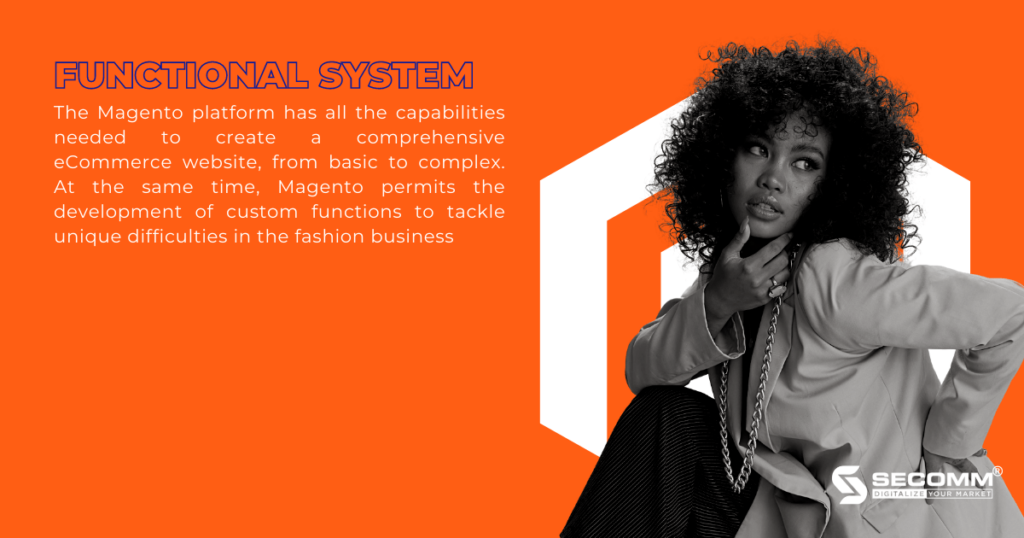
Advanced functionality that enhances the online shopping experience for consumers, such as:
Specific functions are those that assist businesses in dealing with fashion industry issues, such as:
In general, Magento can create any sophisticated functional system, with infrastructural development before and after depending on the demands of each organisation.
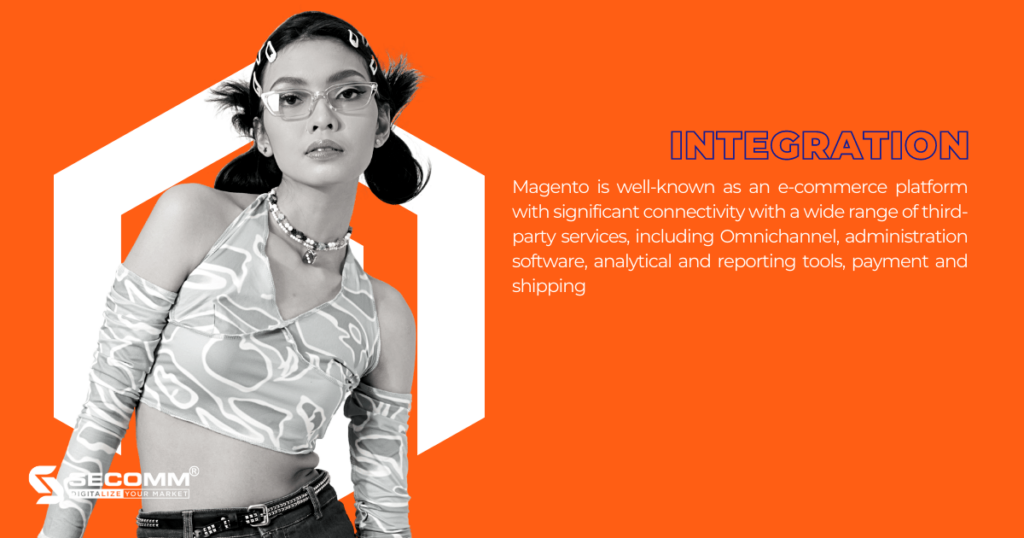
Magento is well-known as an e-commerce platform with significant connectivity with a wide range of third-party services, including Omnichannel, administration software, analytical and reporting tools, payment and shipping.
Magento allows organisations to extend from one website to many distinct websites on the same system to satisfy the requirements of company-scale development. This implies that organisations can access and manage data from a single central Magento system.
With Magento’s language-switching functionality, businesses can create an attractive eCommerce website with customer-friendly content and languages. Furthermore, the Magento system enables businesses to effortlessly exchange currencies, allowing them to grow into new markets in a variety of nations.
From then, Magento can help businesses scale and function effectively without switching to another eCommerce platform from the beginning of business through the period of expansion.
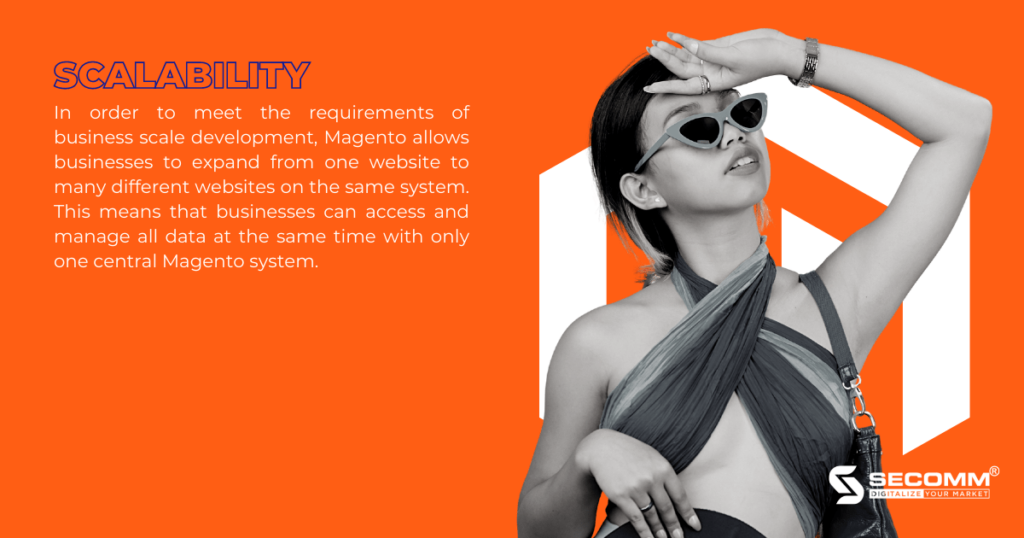
In a nutshell, Magento is an e-commerce platform that caters for the demands of all types and sizes of fashion businesses, from website interface design and functional system development to integration and scalability. However, there are numerous challenges that firms must overcome when implementing fashion eCommerce with Magento, such as high installation costs, long construction times, and the requirement for highly skilled employees.
Recognising the aforementioned business difficulties, SECOMM provides free consultation services on technology and resource solutions for each company.
Contact SECOMM now for more details!
 2
2
 5,636
5,636
 2
2
 1
1
eCommerce has become an essential business model that fashion brands must utilize not only to survive during the COVID-19 pandemic but also to assist companies in adapting to changing customer behavior, providing competitive advantages for future breakthroughs.
As a result, fashion eCommerce has become a crucial business trend for many fashion businesses today, from start-ups to “giant” corporations.

According to Statista, the compound annual growth rate (CAGR) of the fashion eCommerce market is predicted to be 14.2% from 2017 to 2025. The CAGR is forecast to reach a value of USD 1 trillion by 2025, in which the US market accounts for about 20%, equivalent to 204.9 billion USD.
In the Vietnamese market, fashion eCommerce is the second most important sector, just after eGrocery (The Vietnam eCommerce White Paper in 2021).
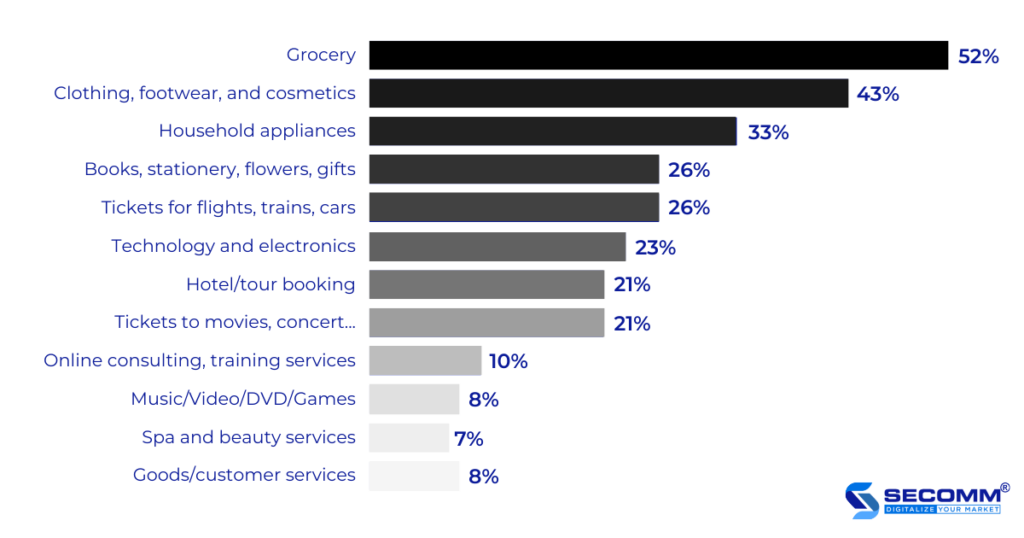
The use of eCommerce will provide fashion firms with a new sales channel, along with offline commercial activity in showrooms. For geographical factors, eCommerce transcends place and time to allow customers to purchase whenever and wherever they choose.
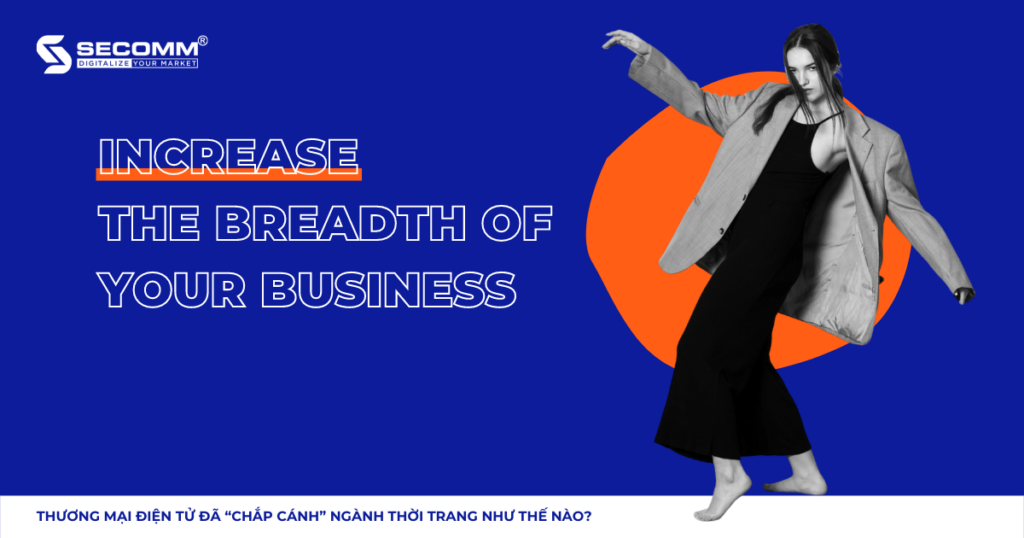
Simultaneously, eCommerce is a prominent avenue for reaching customers, particularly in the sphere of fast fashion for women. Marketing activities such as Livestream, Shoppertainment (Shopping with entertainment), Affiliate, and so on are more effectively carried out, leading to the extension of the commercial scope for enterprises.
Following the COVID-19 epidemic and the social distancing order, consumer behavior has shifted dramatically, with the transition from physical to online buying rising over time in all categories. In the fashion business alone, the percentage of online customers climbed from 18% to 48% in 2020–2021. As a result, it is critical for fashion businesses to implement eCommerce.
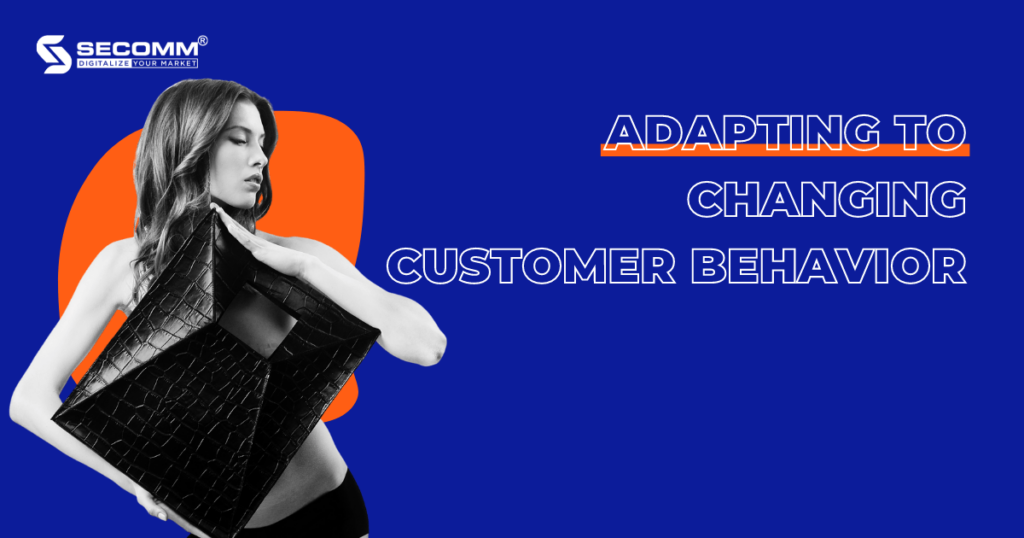
After the epidemic, consumer behavior altered drastically, such as waiting until D-Day to purchase items. Furthermore, by utilizing eCommerce technologies, organizations can follow, analyze, and synthesize the consumption behavior of each target group, something offline purchasing cannot accomplish. This ensures that businesses always have enough aggregated and forecasted data to implement business plans.
2.3. Improve the user experience
When technologies that improve user experience in e-commerce are used, customer purchases will be made faster.
Visual experiences such as photos, movies, virtual reality experiences, and so on provide customers with full product information and expertise, enabling a speedier purchasing process. VR / AR technology enables people to shop for garments, accessories, and shoes online in the same way they would in a store.
For example, the American Apparel company has used AR to show shoppers more product information, like detailed descriptions, availability, colors, and buyer reviews.
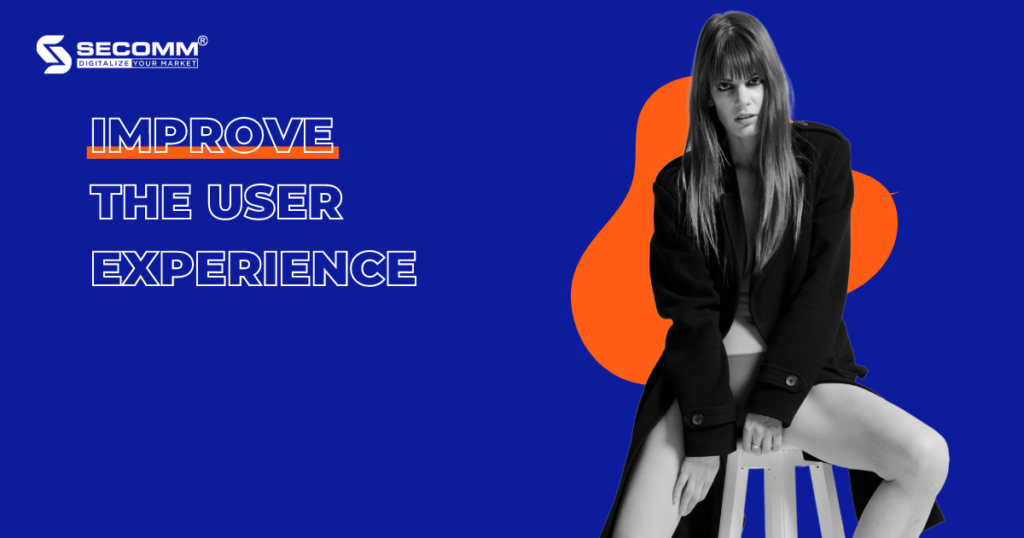
eCommerce allows businesses to tailor the experience for consumers by collecting, evaluating easily, and summarizing the consumption habits of each target group, often with the following features: Recommend products, Products seen, and so on.
eCommerce provides a seamless experience for customers across many channels such as social media (Facebook, Instagram, Tiktok, Zalo, etc), eCommerce marketplace (Shopee, Lazada, Tiki, Sendo, etc), eCommerce website, and mobile app.
Shein is a Chinese eCommerce site created in 2008 that specializes in apparel and accessories. With the motto “everyone can enjoy the beauty of fashion,” the company pushes to give consumers a diverse selection of product options. Shein is currently regarded as a fashion “empire” with a valuation of $ 100 billion – more than Zara ($ 69 billion) and H&M (23 billion) combined.
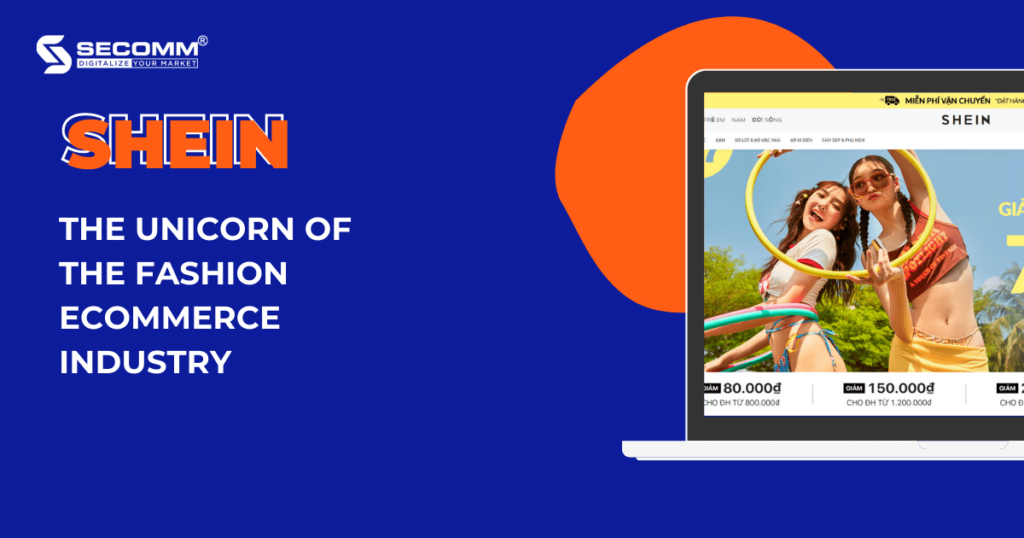
Shein focuses on the youthful client sector of Gen Y and Gen Z, who use the Internet often. As a result, this brand has used technical components to reach more consumers in an appropriate and exact manner.
Shein created an eCommerce system that included a website and a mobile app to target overseas markets such as Europe, America, Australia, and the Middle East. Shein then advocated Social Commerce, Ecommerce Marketing, Affiliate Marketing, KOC, and other tactics to improve brand awareness and engagement.
In 2021, Shein’s mobile app exceeded 7 million monthly active users in the US alone (Airnow Data), and the hashtag #Shein garnered more than 10 billion views on TikTok (Jing Daily). Revenue reached $15.7 billion in 2021, up 60% from 2020 ($9.8 billion). It can be seen that Shein is a clear example of the effective application of eCommerce to capture market share in the fashion industry.
Coolmate is a menswear startup that was established in 2019. Coolmate is a mix of the words “cool” and “mate,” which means that the brand’s major purpose is to be a fashion buddy for customers. After barely two years of operation, this company received a $500,000 funding call from Sharktank Vietnam.
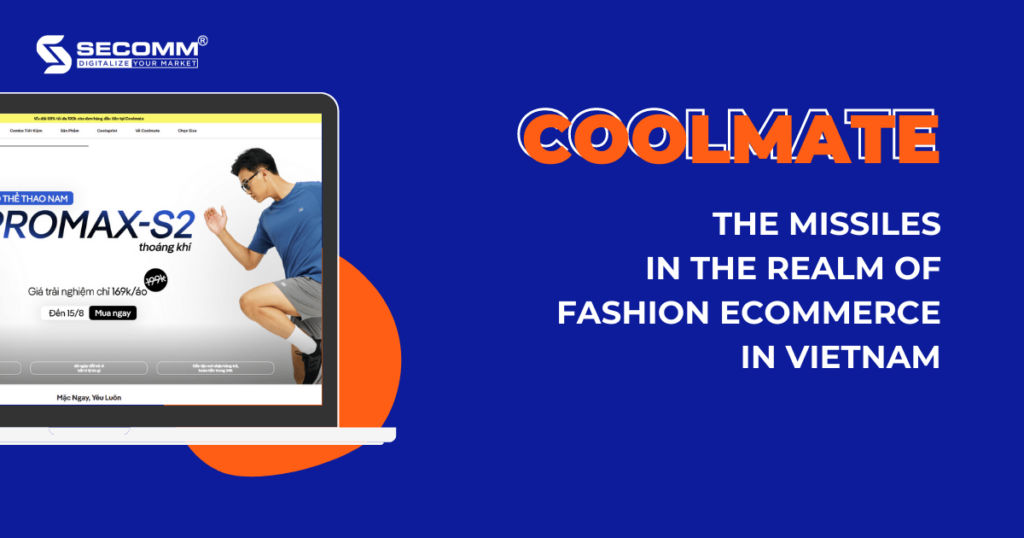
Coolmate utilizes the Direct to Customer Ecommerce (D2C eCommerce) model and concentrates on developing its own fashion website to provide a quick and cost-effective buying experience. At the same time, this brand prioritizes product quality, which is 100% made in Vietnam and meets export standards at low costs. Furthermore, to implement e-commerce faster, Coolmate advocates thoroughly apply the strategy of Ecommerce Marketing, Affiliate Marketing, Email Marketing, etc.
Aside from the $500,000 agreement for a 12.5% interest, 2.5% of the consultancy shares pledged, this fledgling business has other noteworthy statistics. Coolmate’s sales will reach VND 139 billion in 2021, up 3.5 times from 2020, with revenue expected to reach VND 440 billion in 2022 and an IPO (Initial Public Offering) by 2025. In general, eCommerce has considerably contributed to Coolmate’s development, as well as providing the groundwork for fashion businesses to follow to grow by market trends.
Yody (previously Hi5) is a family apparel label that was founded in 2014. To provide Vietnamese fashion goods made of high-quality materials to customers in various regions of Vietnam and throughout the world. Yody now employs over 700 people and has 90 outlets around Vietnam.
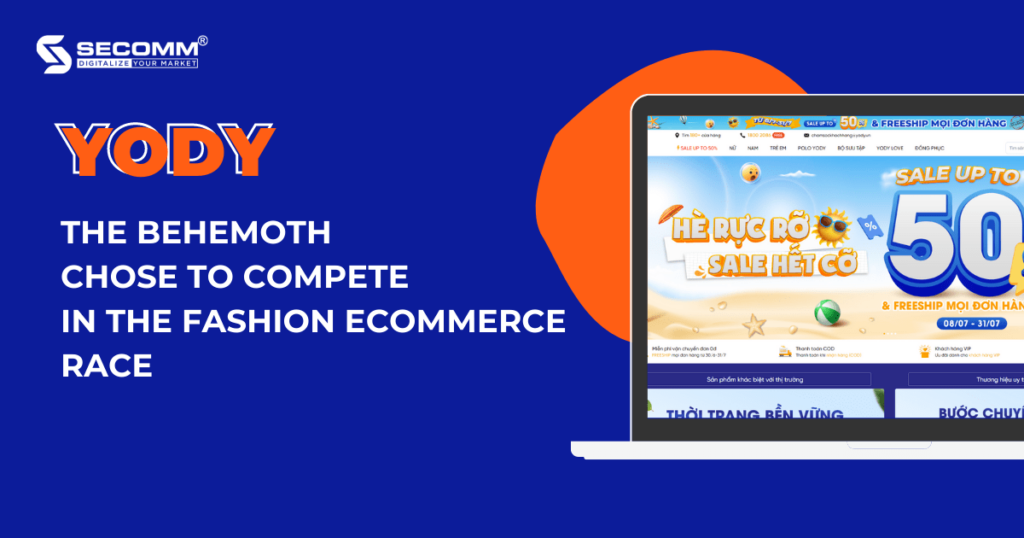
This fashion brand prioritizes the “tripod” of human resource development, product quality, and technology investment. Yody focuses on talent recruiting and culture training to engage employees in human resource development. In terms of products, Yody designs for comfort and convenience, and can be utilized in various situations, such as going to work, going out, attending meetings, and so on.
Regarding technology, Yody focuses on implementing an online sales strategy across Omni-channel such as eCommerce marketplaces, an eCommerce website, Facebook, Livestream, and so on to compete in the eCommerce race, as well as adapting to changing consumer behavior.
In 2016, Yody was selected as one of the ten outstanding young start-ups in Vietnam. By 2021, Yody’s physical sales will have dropped by 65%, but the internet segment has increased by more than 10%. Therefore, the company continues to aim to increase online revenue by 20% in the next year.
In a nutshell, how to apply fashion e-commerce will depend on the size and strategy of each company, but eCommerce is a prerequisite for successful business in this industry.
 2
2
 6,266
6,266
 1
1
 1
1Subscribe to get the latest eBook!
Hotline